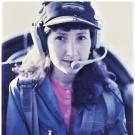Solid mechanics, structural design and materials intersect in the engineering of all mechanical systems and so this research area is broad and inclusive. The types of inquiry include experiment and computation to understand basic phenomena and complex systems. Applications supported by our research are broad, including aircraft structures, propulsion systems, power generation equipment, ground vehicles, pressurized systems, biomechanical implants and heavy equipment. The intersection with materials is often related to minimum weight design and the development of structural systems robust to failure by impact, corrosion and fatigue. The influence of manufacturing process is also included. Material types of interest include metals, ceramics and composites, where the study of composites includes the behavior of thin-walled structures under bending, torsion and axial loads. For aerostructures, areas of emphasis include complex loadings such as residual stress fields or vibratory loads assessed through the study of structural dynamics and aeroelasticity. Specialized work includes degradation of composite materials, aeroelasticity, biomechanics, residual stress measurement, fatigue design and development of advanced finite element methods to solve advanced problems. Composite materials are being used extensively in new airplanes and helicopters, space structures and in other engineering areas such as wind energy, ships, transportation, infrastructure and biomedical joints. Areas of current research in composite structures that encompass several areas of engineering include durability of composites due to in service load (e.g., thermo-hygro-mechanical fatigue, impact) and structural health monitoring methods.
Mechanics of Solids, Structures and Materials
Mechanics of Solids, Structures and Materials Faculty
Michael R. Hill
Position Title
- Professor
Valeria La Saponara
Position Title
- Professor
Nesrin Sarigul-Klijn
Position Title
- Professor




